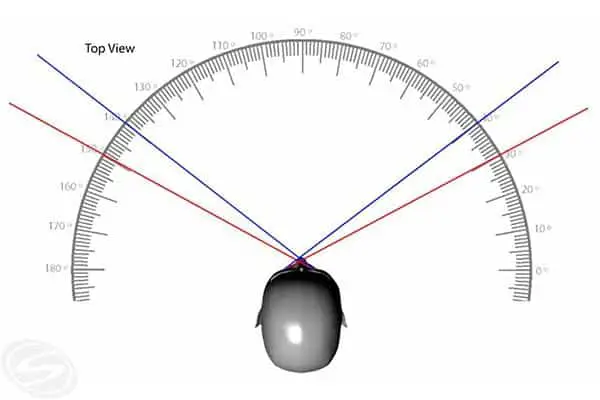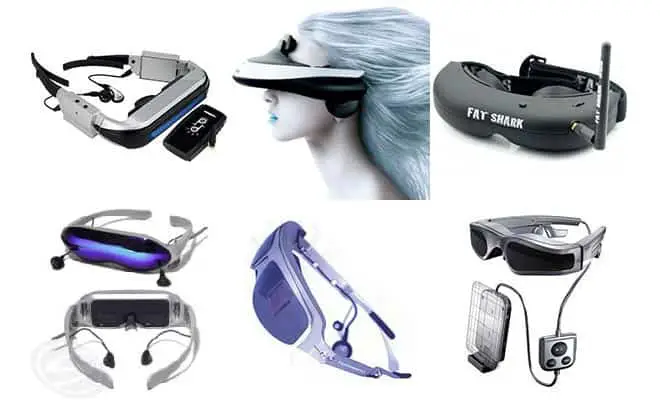Video Glasses are just beginning to receive mainstream attention. The emerging wearable computing market, in the form of smartwatches and smart glasses, has proven to developers and manufacturers that consumers no longer want to be tethered to their desks in order to retrieve and store data or to electronically communicate with friends and loved ones. Mobile devices serve to increase the frequency with which we consume and create data and can enhance the level of intimacy when we electronically communicate with others. Similarly, consumers are beginning to demand entertainment experiences that are not limited to the living room television set. We want our entertainment mobile and we want it on demand. Accordingly, video glasses are becoming popular devices for providing instant mobile entertainment while maintaining the quality and privacy we embrace from our stationary home entertainment systems.
This page provides a comprehensive list of video glasses that are currently in development, that are currently available, and that have entered End of Life (EOL) status. Links to articles and reviews are also provided for your convenience. If you are aware of any smart glasses that are not currently on this list, please drop us a line and we will be sure to add them.
What Are Video Glasses?
Video Glasses are head mounted displays (HMD) that typically contain two small video screens, one in front of each eye. The screens are miniaturized and may be CRTs, LCDs, LEDs, or OLEDs. Some models employ multiple micro-displays to increase total resolution and field of view. Primarily used as media players for watching movies and for advanced gaming, they can also be used as First Person View (FPV) systems that provide the wearer with a remote view from the vantage point of the remote control (RC) vehicles they are piloting.
Video Glasses As Media Payers
Video Glasses are most often used as portable Media Players. However, since size considerations prevent video glasses from integrating the required processing circuitry or storing media, consumers typically employ a separate device to serve that purpose. Popular media players used in tandem with current video glasses include iPhones and iPods, iPads and Android tablets, and portable DVD players. For gaming, adapters can be purchased to allow use with modern game consoles such as the PlayStation 4 or Xbox One. When purchasing for use as a media player, it is important for the consumer to consider which source device they intend to use and ensure compatibility.

First Person View (FPV)
First Person View (FPV) is a method of using video glasses for piloting a remote-controlled (RC) vehicle to give the wearer a first person perspective via a camera mounted on that vehicle. Most often, FPV systems are employed when piloting RC airplanes. When flying FPV, the pilot does not look at the airplane, but rather into a pair of video glasses which provides him with a view from the airplane’s perspective. This allows RC airplanes to be flown beyond the visual range and provides a more immersive experience for the RC pilot. The video below provides an amazing example of FPV RC flying.
Resolution (RES) and Field of View (FOV)
Resolution (RES) and Field of View (FOV) are two important specifications to be considered when purchasing video glasses. Resolution refers to how many pixels the display has and how tightly those pixels are packed. Generally, the higher the Resolution, the better the picture quality. Until recently, standard models provided an unimpressive Resolution of 640 x 480 (VGA). Video glasses currently in development, such as the Oculus Rift, are increasing their Resolution to a more acceptable 1920 x 1080 (HD1080) which makes a huge difference in picture quality.
Field of View refers to the angle of observable display from the viewers perspective. Humans have an 180 degree forward facing horizontal Field of View. A greater Field of View provides a greater sense of immersion and enhanced situational awareness. Therefore, a totally immersive experience would require a Field of View of 180 degrees and, due to the current state of technology, would be VERY expensive. Standard video glasses provide a 30 to 40 degree Field of View, whereas cutting edge models currently in development are increasing Field of View to a much more immersive 90 degrees.

Conclusion
Video Glasses are an emerging technology that are just beginning to break into mainstream popularity as portable media players and first person view systems. We have finally reached the point where prices on high-end models are beginning to drop significantly. Accordingly, if you have been considering a pair, both the specs and the deals have significantly improved in 2015. Just remember, when it comes to Resolution and Field of View, more is better. The time is now for this exciting personal entertainment technology and the table below provides a comprehensive list of models to consider.
Compare Video Glasses And FPV Goggles
[table id=80 /]
Top 5 Video Glasses of 2015
Would you like to see what we believe are the Top 5 Video Glasses currently available? Make the jump and let us know which are your favorite.

